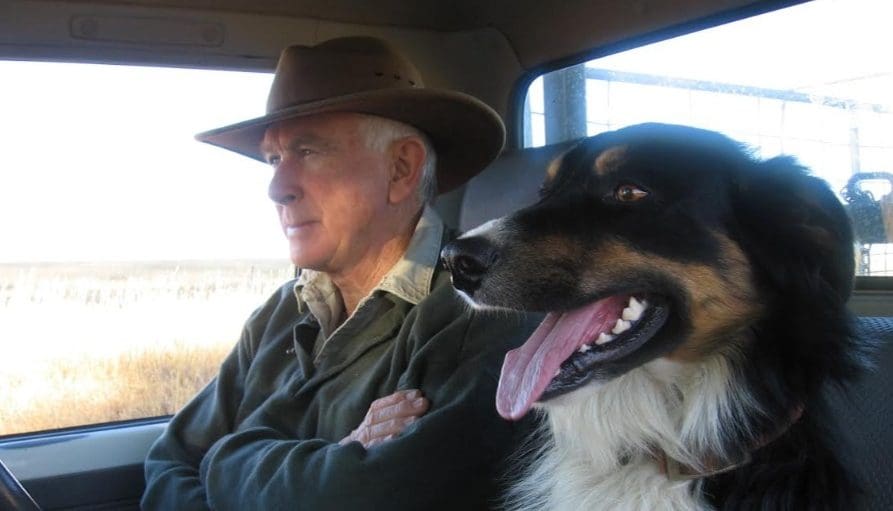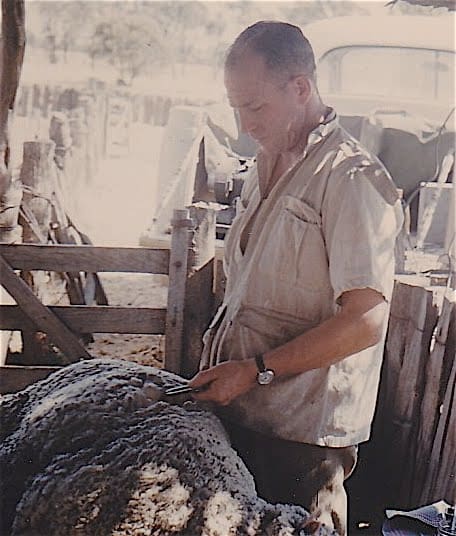
Wool grower Peter Small is looking for a permanent home for HB Carter’s archives.
AUSTRALIA’S self-declared wool capital of the world – Hamilton in Victoria – will be the temporary home of the archives of the pioneering sheep histology scientist HB Carter.
Harold Burnell Carter (1910-2005) was an Australian wool biology scientist credited with ground-breaking research that laid foundations for the scientific understanding of the biology and economic traits of Merino wool.
His work on the histology of the wool fibre, its embryonic development and the genetic and environmental factors that caused variability in wool quality, is credited with aiding in the improvement of the Australian Merino.
Dr Carter also conceived the “Sheep Biology Laboratory” of the CSIRO that was renamed the Ian Clunies Ross Animal Research Laboratory in 1959. Following completion of the Sheep Biology Laboratory, Carter resigned from the CSIRO and took a position at the Animal Breeding Research Organisation in Edinburgh, Scotland.
Dr Carter’s archives – 44 boxes including research notes, wool and skin samples — have been sitting in his daughter in-law’s garage in Kent in south-east England.
Western District sheep producer Peter Small has been working on finding a home for the archival collection for three years, but the initial search by the family began about 15 years ago. Mr Small said Rural Industries Training Centre director Bill Hamill at Hamilton has offered a large space originally constructed as a wool classing room to temporarily house it.
Australian Wool Innovation has offered $4000 towards the freight costs of bringing the collection to Australia – now estimated at about $11,000 — but the search is continuing for a permanent home for the collection.

H.B. Carter using fleece density calipers. Image – Clive Dalton, NZ.
Mr Small said the Carter archive includes wool and skins samples from sheep in the 1930s.
“This is an historical archival collection of the skin histology of the Australian Merino of the 1930s and is of high significance for comparing it with the histology of all modern Merinos, especially the SRS breeders.
“The material needs to be available for future generations of wool and skin histology scientists and sheep breeders,” he said.
Mr Small said the most important thing about Dr Carter’s career was that his first job after completing his veterinary science studies at Sydney University was with Australian Estates.
“Australian Estates wanted to know why it was that in sheep on some of their properties they had terrible body flystrike, while on others they had virtually none.
“So Carter started looking at these sheep and he decided to have a decent look at their skin and started his histology work,” he said.
“And he found out that it was related to the primary and secondary fibres and the relationship of suint to wax.”
This led to further work by Dr Carter and other scientists on the importance of skin histology to flystrike, fleece diameter and wool cut, Mr Small said.
Mr Small said the collection will be on the way within 10 days from the UK.
“We want any suggestions for a permanent home where it will be accessible to current and future researchers studying the skin histology of Merino sheep.”
Former AWI research manager Paul Swan will do an initial assessment of the collection when it arrives at Hamilton.
He said Dr Carter was a pioneering wool skin scientist who established and applied a lot of the basic skin histology of the Australian Merino that contributed to the foundation of CSIRO’s research into sheep skin, the work by SRS Merino founder Dr Jim Watts. Dr Carter travelled around the world and in Australia taking samples from sheep.
His 1968 Australian Centre for International Agricultural Research report is one of the fundamental data sets for understanding sheep skin and that includes from breeds and strains of sheep and goats from around the world.
“And for me personally it has been hugely important to understand the biological levers controlling fleece weight and fibre diameter,” he said.
“What Harold has contributed was enormous.”
He said Dr Carter’s family has several boxes of his research, including from Australia, fleece samples, skin biopsies, and glass slides of skin sections from around the world.
“It remains a resource for researchers as foundational reference samples.
“HB Carter provided some of the skin histology foundations that informed the CSIRO’s scientists who he collaborated with, who then provided the basis for a lot of the discoveries that Jim Watts commercialised,” Dr Swan said.
“It was Neville Jackson in the early 70s, building on Carter’s research and applying the skin histology work, who made the fundamental discovery that you could increase fleece weight and reduce fibre diameter at the same time by selecting for a long but dense fleece with fine primary follicles.”
Dr Swan said the saying in science that ‘if I see further than you it’s because I am standing on your shoulders’ reflects Dr Carter’s influence on subsequent wool researchers.
“A lot of these researchers have built on the foundation Harold Carter laid.
“The reason that people are interested in follicle density even now is the reason that Harold Carter helped lay out; that it controlled the relationship between diameter and fleece weight,” he said.
“Carter’s work is to me one of the scientific foundations of the modern Merino.
“Our sheep nowadays are heavier cutting finer in micron and a lot of that relates to the skin research that done at CSIRO in the 60s, 70s and 80s, that Jim Watts then commercialised in the 90s through the SRS program.”

I just moved from AgResearch NZ to Lincoln University NZ and was faced with a similar, though less significant version of the same problem; what to do with 30 years work on wool and sheep skin. The moths had taken care of the wool fibre collection, but the skin samples are still intact. So I took the collection home and put it in my garage.
In some kind of eerie coincidence, I was reading a significant tome written by HB Carter last night to revise mulesing.
I hope that the place that will be the permanent showplace carries Carter’s name.
Yes Gweneth Tulloh, we will ensure Dr Carter’s work is appropriately recognized. As it should have been decades ago.